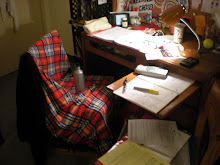Recession affecting water bottle sales

A revolution, triggered by economic downturn and eventual recovery. Have weot heard this story before? Yes, this is what happens during recessions. We vote in new presidential administrations and stop buying products that pollute our Earth, harm our bodies, are pretty monetarily costly.
…Analysts also credit the decline to environmentalists' campaigns, such as Take Back the Tap and TapIt, to encourage consumers to avoid bottled water. Their encouragement has also led cities from Takoma Park, Md. to San Francisco to cut bottled water out of their budgets, to the tune of up to hundreds of thousands of dollars. Just this week, the Guardian called out the BBC for spending more than $600,000 per year on bottled water.
…. On water. Money simply spent on bottled water.
http://www.usnews.com/blogs/fresh-greens/2009/08/13/bottled-water-demand-beginning-to-empty-out.html
On Wednesday (Nestle) reported that profits for the first half of the year dropped 2.7 percent, its first decline in six years.
What not to do
"It's an obvious way to cut back," said Joan Holleran, director of research for market research firm Mintel. "People might still be buying bottled water, but you can bet that they're refilling those bottles."
Obviously people are forgetting and ignoring the health costs of drinking from refilled plastic water bottles. Refer to my earlier posts, especially from April 21, about the dangers of not only drinking from plastics once, but multiple times.
Basically, Think erosion of toxic materials into your body. Each time you leave your water in heated areas, like hot cars, BPA leaches into your water at higher rates. Each time you refill your plastic water bottle, more chemicals like BPA are depleting into the water you drink.
How much we've been spending on bottled water
Sales of bottled water swelled 59 percent to $5.1 billion between 2003 to 2008, making it one of the fastest growing beverages. About 70 percent of consumers say they drink bottled water.
http://www.washingtonpost.com/wp-dyn/content/article/2009/08/12/AR2009081203074.html
Who to blame for this costly trend: the profiting companies, of course
Florida's got a personal interest in the bottled water trend. Like it or not, the state's springs are a major supplier of water to the industry.
… Pepsi CEO Indra Nooyi recently cited the shift to tap water "in this downturn" by some of its "casual" beverage drinkers. Pepsi's Aquafina is the country's biggest bottled water brand.
In a tough economy, Pepsi Bottling North America president Robert King recently told analysts, "one of the first things that a shopper can decide to do is consume tap water as opposed to purchasing bottled water."
Bitterness ensued.
Nestle Waters North America is a major user of Florida's aquifer to bottle water under the Zephyrhills brand. Nestle also sells Arrowhead, Calistoga, Deer Park, Ice Mountain, Ozarka and Poland Spring among its domestic brands.
A near-monopoly of the most popular water drinks in the country. I’ve yet to find one thing I like about the plastic water bottle industry.
http://www.tampabay.com/news/business/bottled-water-industry-sales-decrease-during-recession/1028389
A side note: Bling H2O

The website is below, and I’m appalled. Glass bottles of water, blinged out with Swarovski crystals, costing upwards of $500. I don’t know which I can handle less: a female’s nearly naked legs and butt conveniently cushioning a bottle on the main page, or the fact that this is actually a popular product that celebrities buy, or the companies' frequent advertising on the Fox News Channel.
http://www.blingh2o.com/store/index.php
I’d also like to give immense credit to the Washington Post article posted above. Throughout my search for this post, I found nearly verbatim citations of the article by journalists and bloggers across the country. Thanks for supplying our information, Washington Post.
